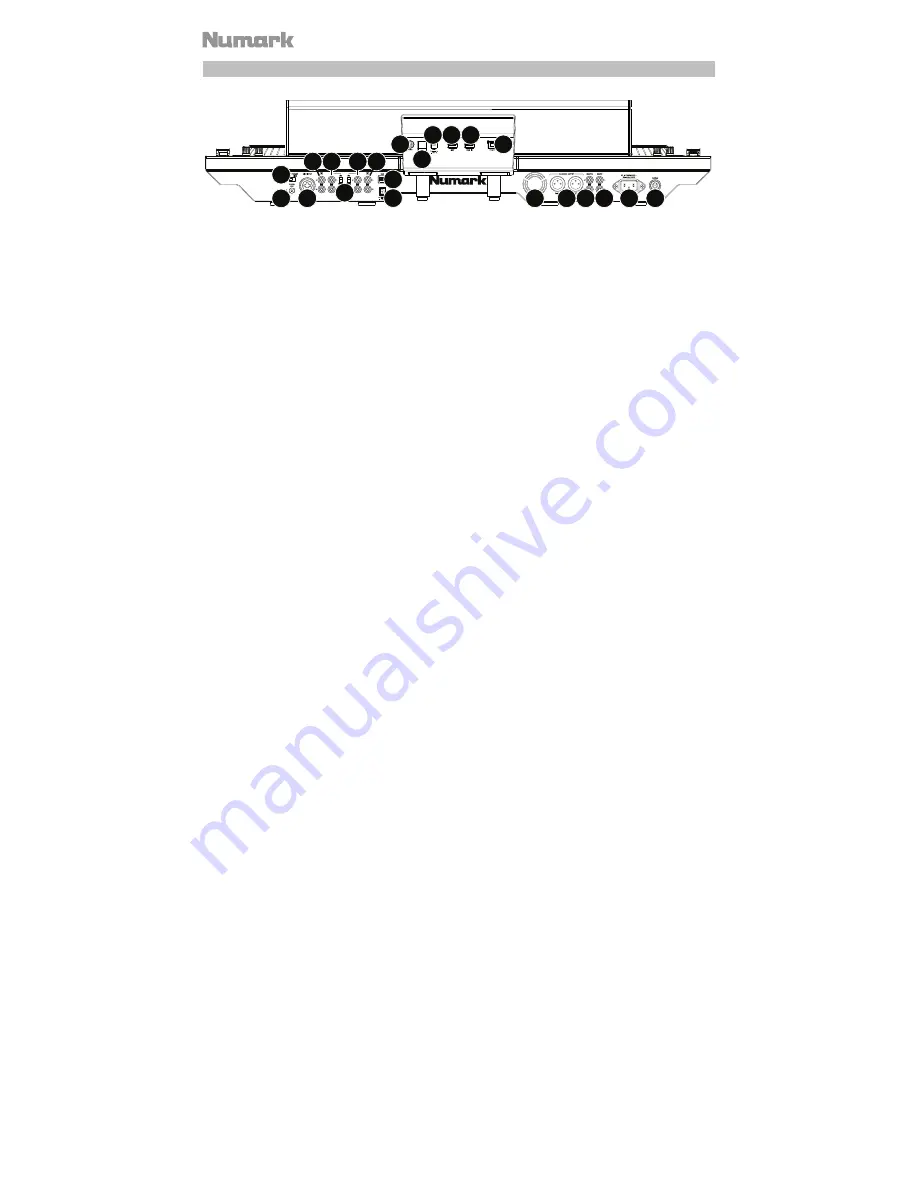
22
Rear Panel
1 2
3
4
5
6
7
8 9
11
20
12 13
14
14
16
17 18
19
16
15
10
1.
NS7III Power Input:
Use the included power cable to connect NS7III to a power outlet.
While the power is switched off, plug the cable into NS7III first, then plug the cable into a
power outlet.
2.
NS7III Power Switch:
Powers NS7III on and off. Power on NS7III after all input devices
have been connected and before you turn on amplifiers. Turn off amplifiers before you turn
off NS7III.
3.
USB Port:
Use the included small display USB cable to connect this USB port to the
“
NS7”
USB
port
on the display.
4.
Power Output
(
DC Out
)
:
Use the included small display power cable to connect this
output to the
display power input
(
DC In
).
5.
Display Power Input
(
DC In
)
:
Use the included small display power cable to connect this
input to the
power output
(
DC Out
) on NS7III.
6.
Cable Restraint:
You can secure the display power cable to this restraint to help prevent
disconnecting it accidentally.
7.
Display Power Switch:
Powers the display unit on and off.
8.
USB Port
(
NS7
)
:
Use the included small display USB cable to connect this USB port to the
USB port
on NS7III.
9.
USB Port
(
USB In
)
:
You can connect an optional USB hard drive (not included) to this
powered USB port.
10.
Display USB Port
(
To PC
)
:
Use the included USB cable to connect this USB port to your
computer.
11.
Master Output
(
XLR
)
:
Connect this low-impedance XLR output to a PA system or powered
monitors. The level of this output is controlled with the Master knob on the top panel.
12.
Master Output
(
RCA
)
:
Use standard RCA cables to connect this output to a speaker or
amplifier system. The level of this output is controlled by the
Master
knob on the top panel.
13.
Booth Output
(
RCA
)
:
Use standard RCA cables to connect this output to a booth monitoring
system. The level of this output is controlled by the
Booth
knob on the top panel.
14.
Line
/
Phono Inputs
(
RCA
)
:
Connect your audio sources to these inputs. These inputs can
accept both line and phono-level signals.
15.
Line
/
Phono Switch:
Flip this switch to the appropriate position, depending on the device
connected to the
Line
/
Phono Inputs
. If you are using phono-level turntables, set this
switch to
Phono
to provide the additional amplification needed for phono-level signals. If
using a line-level device, such as a CD player or sampler, set this switch to
Line
.
16.
Line Inputs
(
RCA
)
:
Connect line-level devices, such as CD players, samplers or audio
interfaces, to these inputs.
















